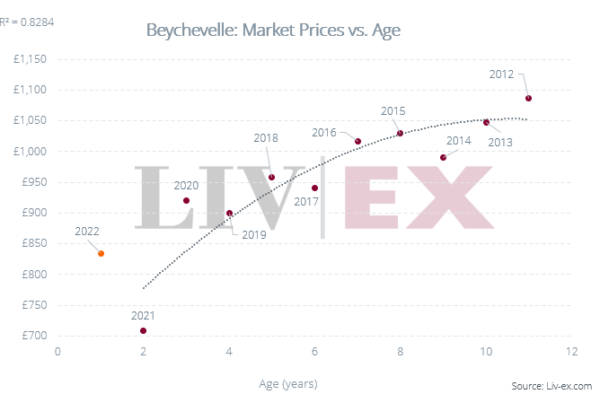The availability of more data raises more questions for wine businesses; which should I rely on? How do I best spot opportunities to trade?
- Good quality data is more important to wine businesses than ever before.
- Understanding the true value of your wine can directly impact commercial success.
- Extracting insights from data takes time, which can be reduced by using analysis tools.
What data sources are available?
Buyers and sellers have a wealth of data points available to them; auction sale price, the average list prices from search engines or aggregators, offer prices from community sites, bids and offers on merchant exchanges, and more. Putting the wrong value on a wine has a commercial consequence that a wine business is usually keen to avoid.
Knowing whether prices for a group of wines are rising or falling gives you an indication of the future value of those wines. To know this, you need to know what’s happening to prices on the secondary market.
“Informed markets create sophisticated buyers who make purchase decisions based on real and relevant data.”
David Pearson, formerly of Opus One
Are prices rising or falling?
Liv-ex is the global marketplace for the wine trade; the secondary market. It is the largest, most liquid marketplace in the world with both live, firm bids and offers on over 5,000 wines. These bids and offers are the real-time, independent trading behaviour of over 530 reputable merchants worldwide. The Mid Price between them is used to create our many indices. These include the industry benchmark Liv-ex 100 Index which tracks the performance of the fine wine market and is quoted by Bloomberg, Reuters and the wine press.
What is this wine really worth?
To understand the true value of your wine, you need to know the lowest price at which someone could legitimately buy that wine from another reputable, stockholding merchant on the secondary market, rather than the aggregated price shown on some other wine data sites.
Each month, Liv-ex collects stock lists from many of our 530+ members worldwide. An algorithm then determines the best listed price for a wine in the secondary market; the Liv-ex Market Price.
What analysis tools are available?
Our database contains over 780m current and historic price points for around 300,000 wines. Wine businesses can explore this data in several ways on Liv-ex. Several specific tools exist to analyse and visualise this data quickly and easily.
Indices Explorer
Launching in Nov 2021, our new Indices Explorer allows you to dig into the data behind our indices so that you can find out which wines are driving market trends.
Explore the most traded wines using the industry benchmark index; the Liv-ex Fine Wine 100, or the regional indices of Bordeaux, Burgundy, Champagne, Italy and more. Rank the component wines by their price performance to spot opportunities before trading them.
Charting Tool
You can also use the new Charting Tool to plot the relative market price performance of a specific wine vintage on an LWIN11 basis (eg Lafite Rothschild 2010), comparing it with other vintages, other wines, Liv-ex indices or other asset classes like gold or the S&P500. Download and share powerful charts with your customers, or trade the wines directly yourself.
Fair Value Tool
Liv-ex’s Fair Value Tool lets you compare the relative value of a new release against previous releases.
It uses regression analysis to map the relationship between critic scores and the market price for a wine to highlight trading opportunities.
Liv-ex analysis is drawn from the world’s most comprehensive database of fine wine prices. The data reflects the real time activity of Liv-ex’s 530+ merchant members from across the globe. Together they represent the largest pool of liquidity in the world – currently £80m of bids and offers across 16,000 wines. Independent data, direct from the market.





